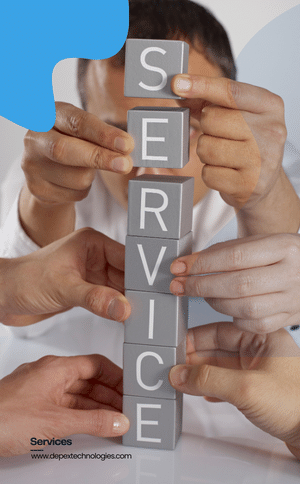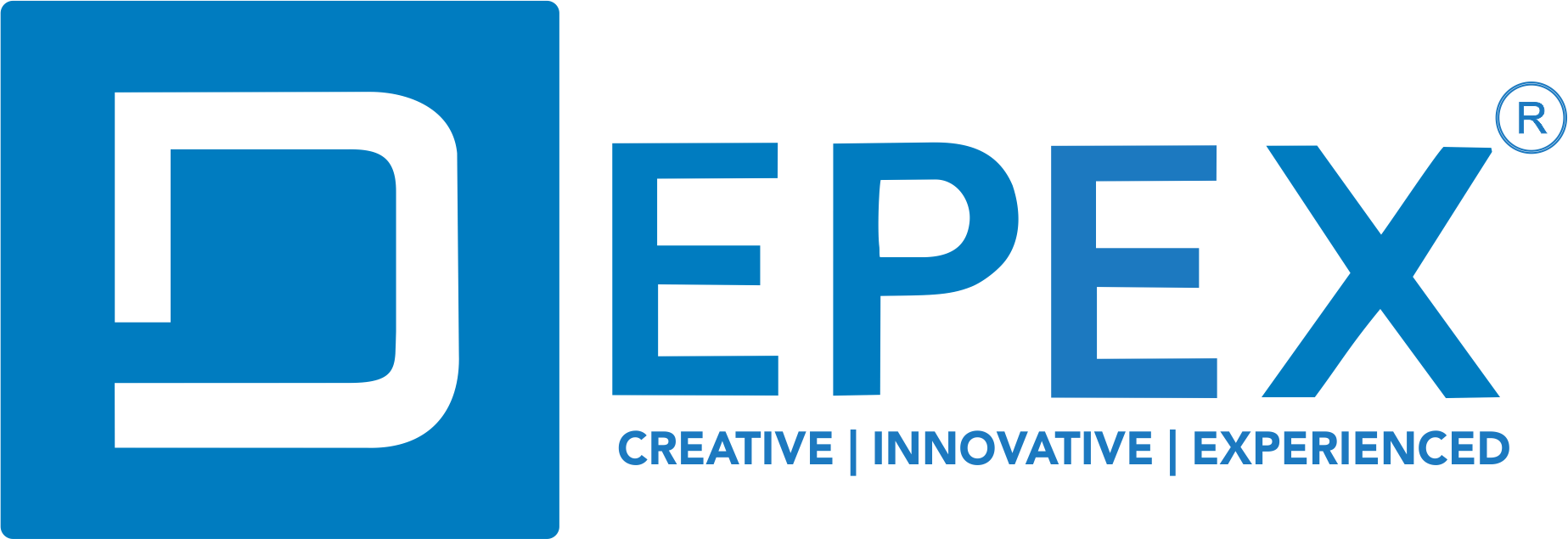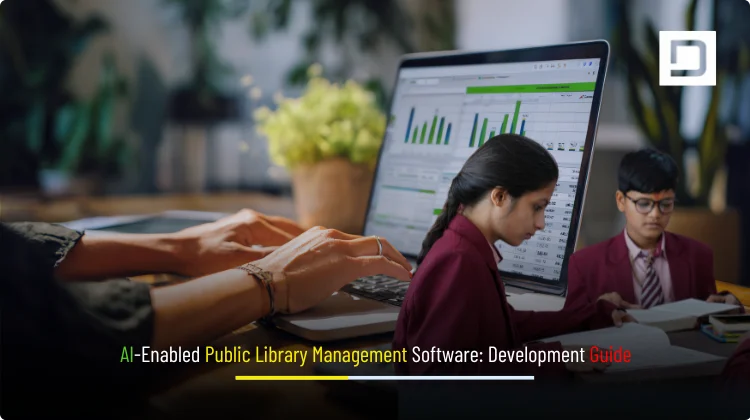AI-Enabled Public Library Management Software: Development Guide
Public libraries are changing faster than ever. From curbside pickup and digital lending to maker spaces and community learning hubs, libraries must serve patrons online and on-site securely, inclusively, and at scale. To meet these expectations, many authorities are exploring Public Library Management Software Development projects that are modular, cloud-native, and AI-enabled from day one. This development guide explains how to design and implement Library Management Software Development that streamlines operations, improves discovery, and delivers measurable community impact.
We’ll cover architecture patterns, core modules, AI features, integrations, accessibility, analytics, security, and a pragmatic delivery roadmap. By the end, you will understand the decisions that matter so your library platform stays future-proof while remaining budget-conscious and easy for staff to use. And if you want an experienced team to build it with you, Depex Technologies can help.
Why Build an AI-Enabled Library Platform Now
Public libraries manage millions of records, diverse content types, and high-variance usage patterns. Traditional ILS solutions handle circulation and cataloging but often struggle with unified patron experiences, modern search, and omnichannel service.
AI shifts that baseline in three ways:
- Discovery that feels human: Large Language Model (LLM)–assisted search can interpret intent (“books like…”, “STEM kits for grade 5”, “quiet study rooms today”) and unify results across print, e-books, events, and equipment.
- Operational lift: AI can summarize long policy documents, triage helpdesk tickets, auto-classify new materials, and surface anomalies in circulation or fines.
- Equity and accessibility: With multilingual support, text simplification, audio generation, and personalized reading levels, AI reduces barriers for patrons with different abilities and language backgrounds.
This guide treats Public Library Management Software Development as a platform not a monolith so you can add capabilities incrementally.
Core Modules You will Need
A robust platform typically includes these modules. You can implement them in phases, but design them to interoperate from the start.
1) Cataloging & Metadata
- Records: MARC21 or BIBFRAME support; authority control; linked data compatibility.
- Media types: books, e-books, audiobooks, periodicals, digitized archives, tools (e.g., hotspots), rooms, museum passes.
- AI assist: metadata extraction from vendor feeds or PDFs; subject suggestion; authority reconciliation.
2) Patron Management
- Profiles with privacy controls; fine/grace rules; multi-card households; educator/organization accounts.
- Eligibility: integration with municipal identity systems, student rosters, or utility bills.
- AI assist: reading-level tagging, interest affinity clustering, next-best recommendations.
3) Circulation & Reservations
- Check-in/out workflows; holds; transfers; lost/damaged items; auto-renew policies.
- Room/asset booking for computers, study rooms, maker equipment.
- Self-service via kiosks and mobile app.
- AI assist: demand forecasting for titles and rooms; pick-list optimization.
4) Acquisitions & Vendor Management
- Budgets and funds, vendor catalogs, approvals, receiving, and invoicing.
- AI assist: reorder point prediction, “purchase vs. license” decision support, anomaly detection in invoicing.
5) Digital Lending & e-Resource Access
- Integrations with e-book vendors, OverDrive/Libby-style platforms, institutional repositories, and local archives.
- DRM and license constraints managed centrally.
- AI assist: format recommendations for accessibility, auto-generated summaries.
6) Discovery & Search Experience
- Federated search across catalog, events, local history, and digital subscriptions.
- Faceted navigation, synonyms, spell-correction, and mobile-first UI.
- AI assist: conversational search, query rewriting, and “explain this result” snippets.
7) Programs, Events & Community Engagement
- Event creation, RSVPs, waitlists, attendance analytics, certificate generation.
- Partnerships and outreach tracking (schools, nonprofits).
- AI assist: audience segmentation, event interest forecasting, auto-generated flyers.
8) Staff Back-Office & Helpdesk
- Work queues, ticketing, internal notes, and task automation (e.g., catalog fix-ups).
- AI assist: macro suggestions, policy Q&A chatbot for staff, email drafting.
9) Reporting & Impact Analytics
- Circulation KPIs, collection turnover, program attendance, digital vs. physical split, demographic reach (privacy-preserving).
- AI assist: trend detection, forecast dashboards, narrative insights for board reports.

Data Model & Interoperability
For longevity, design your data model with interoperability in mind:
- Standards: Support MARC21 and BIBFRAME where relevant; Dublin Core for digital items; ISO 27001 controls for security; WCAG for accessibility.
- Linked data: Expose catalog records as linked open data; connect to VIAF, Wikidata, and local authority files.
- Identifiers: Persistent IDs for items, editions, works; ORCID/ISNI for creators; DOIs for digital objects.
- APIs: GraphQL for internal composition; REST for external partners; webhooks for events (e.g., “hold ready”).
- Search index: Denormalized views (Elasticsearch/OpenSearch/Solr) to power facets, spell-correction, and vector search.
This model ensures your Library Management Software Development project remains compatible with vendors and open initiatives.
AI Capabilities: Where They Add Real Value
AI is not a single feature; it’s a toolbox. Prioritize use cases that return staff time and improve patron outcomes.
AI-Assisted Cataloging
- Extract subjects, summaries, audience grade levels, and genres from publisher ONIX feeds or PDFs.
- Flag metadata discrepancies against authority records.
- Suggest BISAC/LCSH headings; staff approves changes.
Conversational Discovery
- Natural-language queries like “graphic novels for 10-12 year olds about friendship.”
- Hybrid search (keyword + embeddings) to improve recall and precision.
- Responsible answers: Cite sources (records, events) to build trust.
Personalized Recommendations
- Collaborative filtering and content-based models to recommend titles, events, or maker kits.
- Privacy-preserving segmentation (local embeddings, no raw reading history leaving tenant).
- Opt-in controls and data minimization by default.
Staff Co-pilots
- Draft policy emails, procurement justifications, MARC edits, and program descriptions.
- Summarize board reports and survey feedback.
- Auto-triage helpdesk tickets with suggested responses.
Accessibility Enhancement
- One-click text simplification; text-to-speech; alternate language summaries.
- Reading-level matching for youth patrons.
Forecasting & Optimization
- Predict demand spikes for popular titles or seasonal programs.
- Optimize branch transfers and shelving priorities.
Architecture Blueprint
Design for modularity, security, and scale.
Cloud-Native, Multi-Tenant (Optional)
- Core services for catalog, patrons, circulation, events, acquisitions.
- Edge cache/CDN for resilient mobile and kiosk experiences.
- Tenant isolation if supporting multiple municipalities.
Data Plane
- OLTP database (PostgreSQL) for transactions.
- Search engine (OpenSearch/Elasticsearch) for faceted and vector search.
- Object storage for covers, PDFs, audio, and digitized archives.
- Event bus (Kafka/Pulsar) for decoupling and webhooks.
AI/ML Layer
- Vector DB for embeddings and recommendations.
- Model serving with guardrails (input/output filtering, PII scrubbing).
- Prompt management and evaluation harness; AB testing for answer quality.
Integration Layer
- Connectors for identity, payment, e-resource vendors, city data hubs, and learning platforms.
- ETL/ELT pipelines to ingest vendor feeds and legacy exports.
Front Ends
- Patron web/app: responsive, PWA-ready, offline-capable for reservations and digital cards.
- Staff console: role-based views, queue management, cataloging tools, dashboards.
- Kiosk: self-checkout, holds pickup, and quick search.
Security, Privacy & Compliance
Public libraries steward sensitive information. Build in privacy from the start.
- Least-privilege RBAC with field-level permissions.
- Encryption at rest (KMS-managed) and in transit (TLS 1.2+).
- PII minimization: store only what’s necessary; pseudonymize analytics.
- Audit trails: immutable logs for circulation and admin actions.
- Consent UX: clear opt-in controls for recommendations and data sharing.
- Data residency: choose regions that meet municipal rules.
- Backups & DR: automated, tested restores and cross-region failover.
- Model safety: content filtering, prompt injection defenses, and red-teaming for the AI layer.
Accessibility & Inclusive Design
Equitable access is a mission requirement.
- WCAG 2.2 AA targets for all patron-facing interfaces.
- Keyboard navigation, high-contrast themes, dyslexia-friendly fonts, captioning for media.
- Multilingual UI with right-to-left support where needed.
- Screen reader testing workflows and semantic HTML.
- Reading-level controls and text-to-speech for content.
Multi-Branch & Consortia Support
If you manage multiple branches or a regional consortium:
- Shared catalog, distributed circulation with policy overrides per branch.
- Floating collections and transfer routing.
- Branch analytics roll-ups and branch-level permissions.
- Theming per branch while keeping unified SSO and governance.
Offline & Edge Scenarios
Network is not guaranteed everywhere:
- PWA caching for search, card barcode, and reservations.
- Kiosk fallbacks: queue scans offline and sync later.
- Branch-level edge nodes for quick lookups when WAN is slow.
Integrations to Plan For
- Identity: municipal SSO, school rosters (Clever/ClassLink), OAuth.
- Payments: fines, donations, event fees via PCI-compliant gateways.
- E-resources: vendor APIs for e-books, journals, streaming.
- Learning platforms: LMS/LTI for classroom tie-ins.
- Analytics: BI tools (Looker, Power BI), privacy-safe export.
- Local digitization: DAMS/repositories with IIIF for images and manuscripts.
Analytics & KPIs That Matter
Build dashboards that quantify impact:
- Circulation health: checkouts per capita, turnover by Dewey/genre.
- Discovery performance: search success rate, zero-result queries, CTR by facet.
- Program outcomes: attendance, repeat participation, age-group reach.
- Digital vs. physical mix: e-lends, holds/active patron ratio.
- Equity metrics: modality usage (audio/large print), language access.
- Operational efficiency: hold shelf time, transfer SLAs, catalog fix-up backlog.
- Forecast accuracy: demand prediction error over time.
AI can generate narrative summaries: “Youth STEM programs up 18% QoQ, driven by Grade 5 partnerships.”
Phased Delivery Roadmap
A measured path keeps risk low and momentum high.
Phase 0: Discovery (2–4 weeks)
- Stakeholder interviews (staff, patrons, city IT).
- Current-state assessment of catalog, circulation, events, and vendor contracts.
- Non-functional requirements: uptime, latency, privacy, accessibility.
- Prioritized backlog and total cost of ownership (TCO) model.
1st Phase : Foundations (6–10 weeks)
- Stand up core services: catalog, patrons, circulation.
- Set up search index and initial ETL for vendor feeds.
- Implement SSO, RBAC, audit logging, and observability.
- Ship minimal patron portal with search and account view.
2nd Phase: Discovery & Events (6–10 weeks)
- Federated search across physical + digital; initial conversational search.
- Event management with RSVP and waitlist; basic analytics.
- Staff console for work queues and cataloging assist.
3rd Phase: AI Enhancements (8–12 weeks)
- Recommendation engine (opt-in), catalog AI assist at scale, helpdesk triage.
- Accessibility AI (simplified text, audio previews).
- Forecasting for titles and room reservations.
4th Phase: Consortia & Optimization (as needed)
- Multi-branch policies, floating collections, transfer optimization.
- Advanced dashboards and narrative insights for board reporting.
- Hardening: perf tuning, chaos tests, DR drills.
Tech Stack Options (Illustrative)
- Backend: Node.js (NestJS) or Java (Spring Boot) for services; Python for AI pipelines.
- Database: PostgreSQL for OLTP; Redis for caching.
- Search: OpenSearch/Elasticsearch with BM25 + vector search.
- AI/ML: Transformers for embeddings; on-prem or cloud model endpoints with guardrails; vector DB (pgvector, Pinecone, or Milvus).
- Frontend: React/Next.js for web; React Native for mobile; PWA support.
- DevOps: Kubernetes, Terraform, CI/CD (GitHub Actions/GitLab), OpenTelemetry.
- Security: OIDC, Vault/KMS for secrets, WAF, CSP headers.
- Analytics: dbt + warehouse (BigQuery/Snowflake/Postgres) + BI.
Choose components based on team skills, procurement constraints, and long-term support.
Cost Drivers & Budget Ranges (Guidance)
While exact numbers depend on scope and geography, understand what drives cost:
- Integrations (identity, e-resources) and license terms.
- AI depth (conversational search vs. full staff co-pilot + forecasting).
- Accessibility requirements and localization breadth.
- Multi-branch complexity and data migration scale.
- Hosting posture (single tenant, multi-tenant, or on-prem).
A practical pilot for a single system with core catalog, circulation, patron portal, and basic AI often aligns with a mid-five-figure to low-six-figure implementation, followed by a measured feature roadmap. Owning the roadmap avoids perpetual vendor lock-in and keeps TCO predictable.
Quality, Testing & Governance
- Test strategy: unit, contract, and end-to-end tests; synthetic search monitoring.
- AI evaluation: golden datasets for query intents; bias and safety tests; human-in-the-loop approvals for cataloging changes.
- Performance: load tests for search and circulation spikes (after-school peaks, holidays).
- Accessibility audits: automated + manual screen reader tests each release.
- Change management: librarian training, sandbox environment, and release notes in plain language.
- Data governance: retention policies, export tools for patron portability, DPIAs where applicable.
Migration from Legacy Systems
- Inventory: export all records (MARC/XML/CSV), patrons, fines, holds, and event history.
- Mapping: MARC → internal schema; authority reconciliation; deduplication.
- Dry runs: staged imports with checksums; sample circulation replay.
- Parallel run: limited dual-system period to de-risk cutover.
- Patron comms: clear emails/SMS about new features, renewed consents, and privacy options.
Common Pitfalls—and How to Avoid Them
- Boiling the ocean: ship discovery and circulation before exotic features.
- Opaque AI: every AI action should be explainable and reversible; human oversight for catalog changes.
- Ignoring staff UX: console ergonomics save hours daily—invest in it.
- Vendor lock-in: keep your data portable; use open standards and documented APIs.
- Weak privacy stance: default to opt-in personalization; log model prompts securely without storing raw PII.
Sample Patron Journeys (What “Good” Looks Like)
A busy parent on mobile:
Searches “early reader dinosaur books,” sees curated shelf plus Saturday storytime. One tap to RSVP, one tap to place a hold. App suggests an audiobook alternative with adjustable narration speed.
A teen using a screen reader:
Navigates a WCAG-compliant interface; uses conversational search “manga like Spy×Family but school life.” System returns results with reading-level hints and a captioned event for a manga club meetup.
A librarian receiving 200 new items:
Uploads vendor ONIX and cover images; AI suggests subjects and summaries, flags conflicts with local authority files; staff reviews changes in a one-page queue. Purchase orders reconcile automatically with budgets.
Governance: Policies Worth Writing Down
- Responsible AI policy: scope of AI use, staff override powers, and transparency practices.
- Data policy: patron consent, data retention, disclosure handling, portability.
- Accessibility standard: minimum AA compliance; escalation for exceptions.
- Incident response: security playbooks, breach notification SLAs.
- Open data posture: what catalog metadata you publish as open data and on what license.
How Depex Technologies Delivers
Depex builds civic-scale platforms with modern engineering discipline:
- Discovery first: we clarify goals, constraints, and success metrics with stakeholders across branches and city IT.
- Standards-aligned: MARC/BIBFRAME compatibility, WCAG, security controls, and open API practices.
- AI with guardrails: evaluated models, prompt governance, PII minimization, human-in-the-loop.
- Change management: hands-on staff training, sandbox environments, and accessible documentation.
- Measurable impact: dashboards that show circulation growth, program engagement, and equity improvements.
We treat Public Library Management Software Development as a strategic civic asset not just another app.
Conclusion & Next Steps
Libraries aren’t just warehouses of books; they are engines of opportunity. An AI-enabled platform can make search feel conversational, personalize reading journeys, reduce operational toil, and expand access for every patron without compromising privacy or control. If your city or district is planning Library Management Software Development, use this guide to blueprint the essentials: interoperable data, modular architecture, accessible UX, and responsible AI.

Ready to modernize your library system?
Depex Technologies can partner with you to design and deliver an AI-ready, standards-compliant platform that fits your budget, integrates with your vendors, and proves impact to your board. From discovery through launch and onward with iterative enhancements we’ll align to your roadmap, train your staff, and keep your system secure and future-proof.
Let’s build your next-generation public library together. Contact Depex Technologies to start your Public Library Management Software Development journey today.






